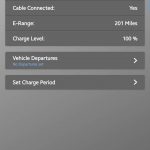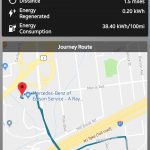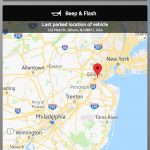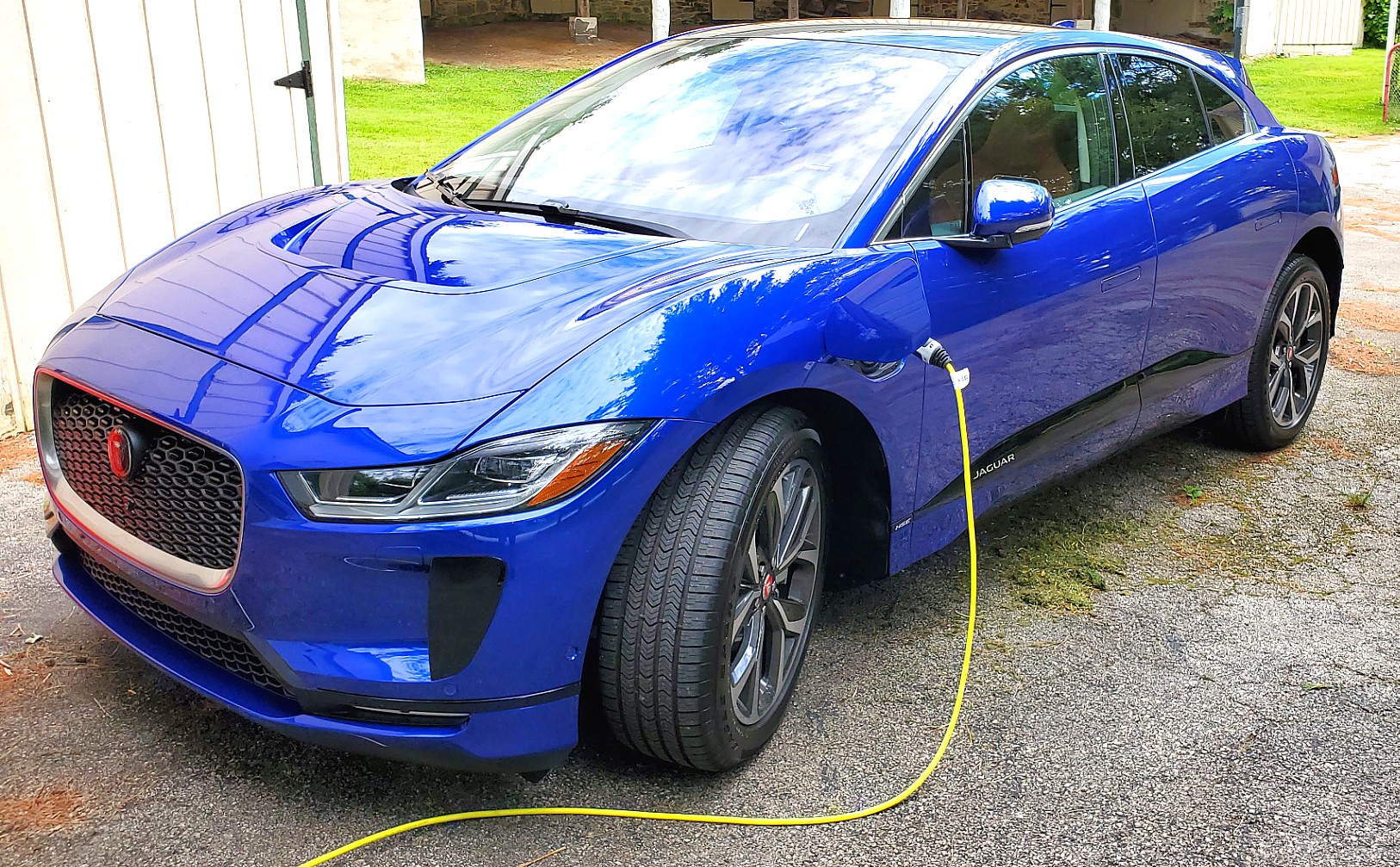
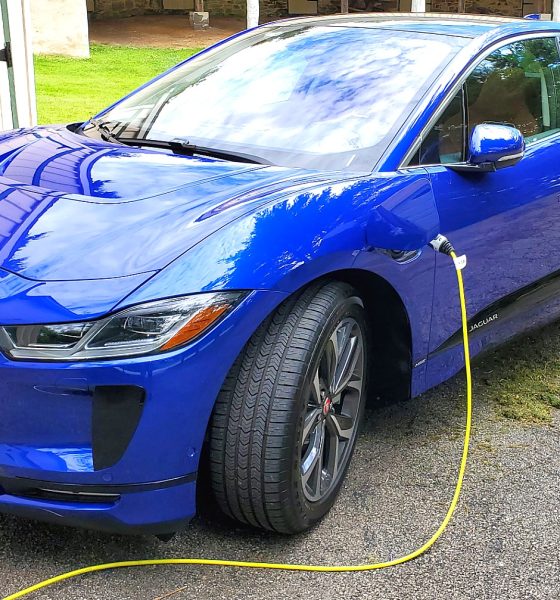
News
Jaguar I-PACE buyer shares ownership experience: range issues, regrets, Teslas, and why EV training matters
Umang Shah is the very definition of a “car guy.” Over his 20 years of car ownership, he has owned 19 vehicles of different styles and brands, from hot hatches to off-road-capable SUVs to high-performance station wagons. This is why, when premium electric cars with decent range and impressive performance started becoming more mainstream, Shah knew that the only question was which electric vehicle he will acquire.
If one were shopping for an electric car, one would likely look at Tesla’s offerings. For Shah, Teslas were incredibly impressive in terms of tech, and the Supercharger Network ensured that range anxiety would be a moot point, but their exterior design was just a bit too conservative. Interestingly, Top Gear host Chris Harris echoed these very same sentiments in a recent review of the Tesla Model 3 Performance.
Thus, after extensive research, Shah opted to purchase a top-of-the-line Jaguar I-PACE for around $90,000. The vehicle was critically acclaimed, having been praised by multitudes of reviewers since its release. It had also been sweeping awards left and right, such as the World Car Design of the Year and World Green Car of the Year awards this past April. The I-PACE was no Tesla in terms of tech, but it had all the accents of a premium automobile from a carmaker like Jaguar, from its luxurious cabin to its bold, aggressive design. Even its range, quoted by the EPA at 234 miles per charge, was decent.

For the I-PACE owner, everything that transpired when he walked into a Jaguar dealership in Edison, NJ, was a perfect example of how hindsight is always 20/20. When he was taking delivery of the vehicle, Shah noticed that the I-PACE was only showing 201 miles of range despite the battery being at 100%. Jaguar informed Shah that the range in the vehicle was “adaptive,” and that it would update over time as the crossover gets driven. Over the next 24 hours, the new EV owner drove his I-PACE, and it quickly became evident that the 201-mile range quoted in the vehicle during delivery might even be optimistic. The surprising scarcity of working fast chargers for the vehicle also tested the I-PACE owner’s patience.
Jaguar left a loaner and took in Shah’s I-PACE for repairs three days after the crossover’s delivery. Based on the I-PACE’s logs from its mobile app, Shah saw that the dealership’s staff charged the vehicle to 100% before going on an 89.5-mile trip, but by the end of the journey, the electric crossover only had 87 miles of range left. A few days after, Shah saw from his mobile app that his I-PACE had been driven for 3.9 miles, which caused a 14-mile drop in the vehicle’s remaining range. Things seemingly took a turn for the better, as the EV owner was informed by the Jaguar dealership a few days later that his crossover had been “patched” with an update related to an ongoing recall for the I-PACE’s brakes, and that it will be ready to be picked up the following day.
The dealership’s staff even added that the I-PACE was already charging in excess of 260-270 miles. Unfortunately, Shah received another call from the dealership right before he was scheduled to reclaim his I-PACE, informing him that the vehicle’s range issues have actually not been addressed. Looking at the crossover’s mobile app, Shah saw that his I-PACE had taken a 1.5-mile trip that ended up consuming 17 miles of range. At this point, the issue was escalated to Jaguar Land Rover corporate, and the I-PACE remained unusable. In a conversation with Teslarati, Shah stated that amidst his vehicle’s issues, it became very evident that Jaguar dealers were simply unprepared to handle an electric car like the I-PACE. They might have a network of dealers across the country, but with very little staff who actually know electric cars inside out, I-PACE owners could end up being left in limbo when issues arise.
Screenshots from the Jaguar I-PACE’s mobile app. (Credit: Umang Shah)
Shah was with his family when Teslarati spoke with him about his experiences with his Jaguar I-PACE, and during our conversation, the new EV owner sounded regretful. Shah sheepishly admitted that he chose the wrong car over a tried-and-tested EV brand like Tesla. With all the headaches he has developed due to his I-PACE’s range issues that Jaguar’s dealers simply can’t seem to fix, Shah stated that he would have been better off had he purchased the conservatively-styled Tesla Model X instead, since the larger SUV’s Long Range variant goes 325 miles per charge for $91,000 before incentives, and it has basic Autopilot as standard.
Shah is currently looking to get a refund for his I-PACE (or at least a replacement unit), and when asked if this experience has discouraged him from EVs as a whole, the car enthusiast stated that his next vehicle will most definitely still be electric. Though this time around, he would make sure that his EV will be a Tesla.
The experiences of Shah hint at one particular problem that could become tricky for veteran automakers amidst their electric vehicle strategies: releasing premium electric cars is one thing, but having a well-trained staff that knows the ins and outs of EVs and their technologies is another. Hopefully, carmakers such as Jaguar could improve in this metric, and other companies dipping their toes in the EV market like Mercedes-Benz, Audi, and Porsche, would adequately prepare their employees and dealers for the upcoming widespread adoption of electric transportation.

News
Tesla China delivery centers look packed as 2025 comes to a close
Needless to say, it appears that Tesla China seems intent on ending 2025 on a strong note.

Tesla’s delivery centers in China seem to be absolutely packed as the final days of 2025 wind down, with photos on social media showing delivery locations being filled wall-to-wall with vehicles waiting for their new owners.
Needless to say, it appears that Tesla China seems intent on ending 2025 on a strong note.
Full delivery center hints at year-end demand surge
A recent image from a Chinese delivery center posted by industry watcher @Tslachan on X revealed rows upon rows of freshly prepared Model Y and Model 3 units, some of which were adorned with red bows and teddy bears. Some customers also seem to be looking over their vehicles with Tesla delivery staff.
The images hint at a strong year-end push to clear inventory and deliver as many vehicles as possible. Interestingly enough, several Model Y L vehicles could be seen in the photos, hinting at the demand for the extended wheelbase-six seat variant of the best-selling all-electric crossover.
Strong demand in China
Consumer demand for the Model Y and Model 3 in China seems to be quite notable. This could be inferred from the estimated delivery dates for the Model 3 and Model Y, which have been extended to February 2026 for several variants. Apart from this, the Model Y and Model 3 also continue to rank well in China’s premium EV segment.
From January to November alone, the Model Y took China’s number one spot in the RMB 200,000-RMB 300,000 segment for electric vehicles, selling 359,463 units. The Model 3 sedan took third place, selling 172,392. This is quite impressive considering that both the Model Y and Model 3 are still priced at a premium compared to some of their rivals, such as the Xiaomi SU7 and YU7.
With delivery centers in December being quite busy, it does seem like Tesla China will end the year on a strong note once more.
News
Tesla Giga Berlin draws “red line” over IG Metall union’s 35-hour week demands
Factory manager André Thierig has drawn a “red line” against reducing Giga Berlin’s workweek to 35 hours, while highlighting that Tesla has actually increased its workers’ salaries more substantially than other carmakers in the country.

Tesla Giga Berlin has found itself in a new labor dispute in Germany, where union IG Metall is pushing for adoption of a collective agreement to boost wages and implement changes, such as a 35-hour workweek.
In a comment, Giga Berlin manager André Thierig drew a “red line” against reducing Giga Berlin’s workweek to 35 hours, while highlighting that Tesla has actually increased its workers’ salaries more substantially than other carmakers in the country.
Tesla factory manager’s “red line”
Tesla Germany is expected to hold a works council election in 2026, which André Thierig considers very important. As per the Giga Berlin plant manager, Giga Berlin’s plant expansion plans might be put on hold if the election favors the union. He also spoke against some of the changes that IG Metall is seeking to implement in the factory, like a 35-hour week, as noted in an rbb24 report.
“The discussion about a 35-hour week is a red line for me. We will not cross it,” Theirig said.
“(The election) will determine whether we can continue our successful path in the future in an independent, flexible, and unbureaucratic manner. Personally, I cannot imagine that the decision-makers in the USA will continue to push ahead with the factory expansion if the election results favor IG Metall.”
Giga Berlin’s wage increase
IG Metall district manager Jan Otto told the German news agency DPA that without a collective agreement, Tesla’s wages remain significantly below levels at other German car factories. He noted the company excuses this by referencing its lowest pay grade, but added: “The two lowest pay grades are not even used in car factories.”
In response, Tesla noted that it has raised the wages of Gigafactory Berlin’s workers more than their German competitors. Thierig noted that with a collective agreement, Giga Berlin’s workers would have seen a 2% wage increase this year. But thanks to Tesla not being unionized, Gigafactory Berlin workers were able to receive a 4% increase, as noted in a CarUp report.
“There was a wage increase of 2% this year in the current collective agreement. Because we are in a different economic situation than the industry as a whole, we were able to double the wages – by 4%. Since production started, this corresponds to a wage increase of more than 25% in less than four years,” Thierig stated.
News
Tesla is seeing a lot of momentum from young Koreans in their 20s-30s: report
From January to November, young buyers purchased over 21,000 Teslas, putting it far ahead of fellow imported rivals like BMW and Mercedes-Benz.

Tesla has captured the hearts of South Korea’s 20s-30s demographic, emerging as the group’s top-selling imported car brand in 2025. From January to November, young buyers purchased over 21,000 Teslas, putting it far ahead of fellow imported rivals like BMW and Mercedes-Benz.
Industry experts cited by The Economist attributed this “Tesla frenzy” to fandom culture, where buyers prioritize the brand over traditional car attributes, similar to snapping up the latest iPhone.
Model Y dominates among young buyers
Data from the Korea Imported Automobile Association showed that Tesla sold 21,757 vehicles to the 20s-30s demographic through November, compared to BMW’s 13,666 and Mercedes-Benz’s 6,983. The Model Y led the list overwhelmingly, with variants like the standard and Long Range models topping purchases for both young men and women.
Young men bought around 16,000 Teslas, mostly Model Y (over 15,000 units), followed by Model 3. Young women followed a similar pattern, favoring Model Y (3,888 units) and Model 3 (1,083 units). The Cybertruck saw minimal sales in this group.
The Model Y’s appeal lies in its family-friendly SUV design, 400-500 km range, quick acceleration, and spacious cargo, which is ideal for commuting and leisure. The Model 3, on the other hand, serves as an accessible entry point with lower pricing, which is valuable considering the country’s EV subsidies.
The Tesla boom
Experts described Tesla’s popularity as “fandom culture,” where young buyers embrace the brand despite criticisms from skeptics. Professor Lee Ho-geun called Tesla a “typical early adopter brand,” comparing purchases to iPhones.
Professor Kim Pil-soo noted that young people view Tesla more as a gadget than a car, and they are likely drawn by marketing, subsidies, and perceived value. They also tend to overlook news of numerous recalls, which are mostly over-the-air software updates, and controversies tied to the company.
Tesla’s position as Korea’s top import for 2025 seems secured. As noted by the publication, Tesla’s December sales figures have not been reported yet, but market analysts have suggested that Tesla has all but secured the top spot among the country’s imported cars this year.
